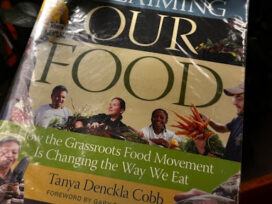
How to Identify Misinformation Online
Now more than ever we need reliable information. When you are scrolling through Facebook or Twitter or just Googling information, there are a variety of resources constantly popping up. When almost anyone can be a publisher of information, it is hard to know what is real and what is not. Thankfully, Crystal Newell, director of library services at PVCC, is here to help. Newell says, “My best advice is to have a healthy level of skepticism when reading news articles from unknown sources.”
When reading articles or information, Newell says, “Keep in mind that fake news often appeals to your emotional responses, so if you feel angered or very saddened by the headline, beware. News articles should report the news more logically, with less bias, and a whole lot less emotion.”
The BBC has posted a video called Fake News and How to Spot It; they echo the concern that headlines that are sensational may not reflect actual news.
After the headline, it is important to check the source to see if it is credible. Look for dates and research the actual website address. Looking at the website address can give you a clue to if it is real or not. For example, abcnews.com.co is likely not a credible source. If you see a web address ending in co, it is usually not a credible source. Also, check for misspellings. Sometimes that can be the easiest way to spot fake news.
Another way to check for fake news is a technique called lateral reading. Newell says, “If you are not familiar with the source, then read about the topic…in other publications.” Lateral reading means that you research the subject matter in other publications. After researching the subject, research people mentioned in the article and the author in other publications. Also, research the source of the material. As you uncover this information, you may validate or contradict the information you are reading.
The incidence of misinformation and fake news is not new, it is just more easily circulated with social media. As reported by Forbes magazine, a recent Pew Research Center report states that 55% of U.S. adults now get their news from social media either “often” or “sometimes.” As the Pew Research’s reporters noted, “Social media is now a part of the news diet of an increasingly large share of the U.S. population.”
Knowing that most people take in most of their information from social media, a BBC video about how to spot fake news suggests that you investigate who posted the article. Many accounts are not actual people. They recommend looking at the social media pictures to see if they are just stock photos, see how many times the person is posting articles, and see if the person actually interacts with other people on Twitter. If the account just reposts articles and never interacts with other people, it may be a fake account.
If these techniques are just too much or you want to double check your work, there are also agencies who work to uncover fake news and misinformation. Newell says, “There are quite a few of these types of organizations out there, but here are the ones I use the most: FactCheck.org; Media Bias/Fact Check; Politifact; Snopes; and Washington Post Fact Checker.” These organizations are focused on looking through information and checking them for validity. For a more extensive list of organizations that uncover fake news and how to spot it, you can go to the PVCC library website.
It is great that we have access to more resources and that we can share our ideas and thoughts with so many people. With this great resource, we have primarily two responsibilities: first, make sure what we are reading is credible, and second, only share credible information.
As Eleanor Roosevelt said, “With freedom comes responsibility,” or as Uncle Ben in Spiderman said, “With great power comes great responsibility.” In the time of Covid 19 and beyond, let us all make sure we are reading and sharing real information.






